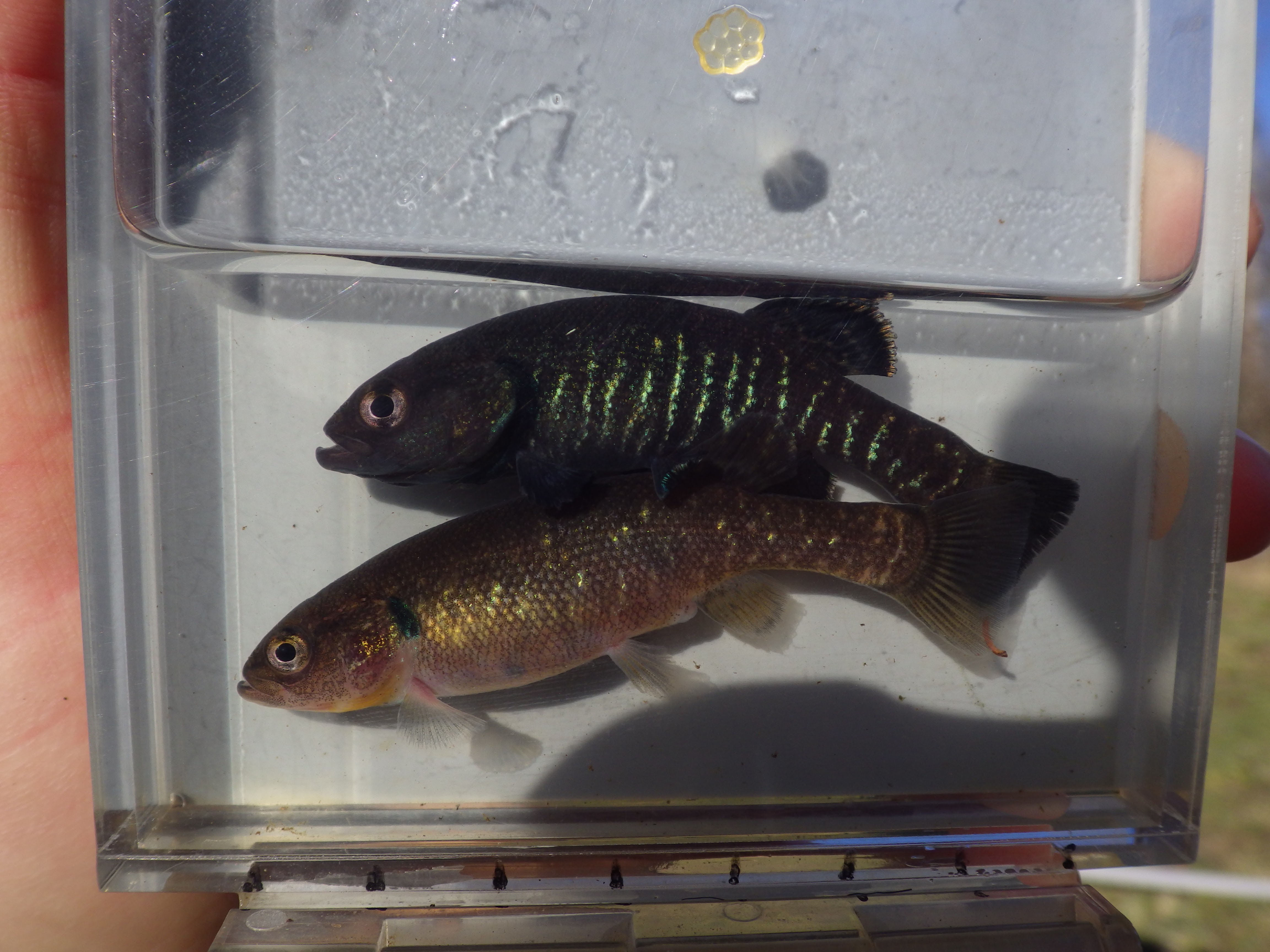Olympic mudminnow on:
[Wikipedia]
[Google]
[Amazon]
 The Olympic mudminnow (''Novumbra hubbsi'') is a fish native to the western lowlands of
The Olympic mudminnow (''Novumbra hubbsi'') is a fish native to the western lowlands of
 The Olympic mudminnow (''Novumbra hubbsi'') is a fish native to the western lowlands of
The Olympic mudminnow (''Novumbra hubbsi'') is a fish native to the western lowlands of Washington
Washington commonly refers to:
* Washington (state), United States
* Washington, D.C., the capital of the United States
** A metonym for the federal government of the United States
** Washington metropolitan area, the metropolitan area centered o ...
: the Chehalis River basin, Deschutes River basin, and some Olympic Peninsula
The Olympic Peninsula is a large arm of land in western Washington that lies across Puget Sound from Seattle, and contains Olympic National Park. It is bounded on the west by the Pacific Ocean, the north by the Strait of Juan de Fuca, and th ...
basins. It grows to 8 cm (about 3 in) in length, and is Washington's only known endemic
Endemism is the state of a species being found in a single defined geographic location, such as an island, state, nation, country or other defined zone; organisms that are indigenous to a place are not endemic to it if they are also found else ...
freshwater fish species. Although they strongly resemble killifish
A killifish is any of various oviparous (egg-laying) cyprinodontiform fish (including families Aplocheilidae, Cyprinodontidae, Fundulidae, Profundulidae and Valenciidae). All together, there are 1,270 species of killifish, the biggest family ...
, mudminnows are more closely related to pike
Pike, Pikes or The Pike may refer to:
Fish
* Blue pike or blue walleye, an extinct color morph of the yellow walleye ''Sander vitreus''
* Ctenoluciidae, the "pike characins", some species of which are commonly known as pikes
* ''Esox'', genus of ...
and muskellunge
The muskellunge ''(Esox masquinongy)'', often shortened to muskie, musky or lunge is a species of large freshwater predatory fish native to North America. It is the largest member of the pike family, Esocidae.
Origin of name
The name "muskell ...
.
The Olympic mudminnow is the only living species in the genus
Genus ( plural genera ) is a taxonomic rank used in the biological classification of living and fossil organisms as well as viruses. In the hierarchy of biological classification, genus comes above species and below family. In binomial nom ...
'' Novumbra'', and one of eight living species worldwide in the paraphyletic family Umbridae
Umbridae is a family of fish in the order Esociformes, which contains pike, pickerel, and mudminnows. The single living genus, ''Umbra'', occupies weed-choked freshwater habitats in eastern North America and eastern Europe. While the family trad ...
. It predominantly resides in darkly stained tannic waters in the lower levels of lentic ecosystems, although may be found in clearwater swamps, and feeds on fish larva
Ichthyoplankton (from Greek: ἰχθύς, , "fish"; and πλαγκτός, , "drifter") are the eggs and larvae of fish. They are mostly found in the sunlit zone of the water column, less than 200 metres deep, which is sometimes called the epi ...
e, egg
An egg is an organic vessel grown by an animal to carry a possibly fertilized egg cell (a zygote) and to incubate from it an embryo within the egg until the embryo has become an animal fetus that can survive on its own, at which point the a ...
s, but more often small invertebrates
Invertebrates are a paraphyletic group of animals that neither possess nor develop a vertebral column (commonly known as a ''backbone'' or ''spine''), derived from the notochord. This is a grouping including all animals apart from the chordat ...
. It prefers areas with mudbeds and dense vegetation, and has a remarkable tolerance for low oxygen levels. The Olympic mudminnow is listed as a sensitive species by the state of Washington. Although many populations are found, the range is limited, and suitable habitat is easily lost to development.
Spawning occurs after overwintering with a short photoperiod and temperatures under 40 degrees Fahrenheit. Once temperatures are in the high 50's, fish will start producing gametes. Females will become noticeably fatter, while males will darken and begin to move into their spawning territories. Spawning takes place over fine leaved plants (submerged terrestrial moss and water wisteria have both been documented in the lab and in the wild) in which the male entices the female to spawn. Spawning happens multiple times as the female only releases one or two eggs for each copulation. Once finished resealing eggs, the female is chased off the territory by the male. After around 10 days, the fry hatch and remain glued to their natal plant until absorbing their yolk sac; after 7 days they become free swimming. The male shows no parental care aside from chasing off any intruders in the territory.
Where their ranges overlap, the spawning coloration of the three-spined stickleback
The three-spined stickleback (''Gasterosteus aculeatus'') is a fish native to most inland and coastal waters north of 30°N. It has long been a subject of scientific study for many reasons. It shows great morphological variation throughout its ra ...
is black, similarly to male Olympic mudminnows. This causes rivalry between the males of the two species.
References
Umbridae Fish of the Western United States Fish described in 1929 {{Esociformes-stub